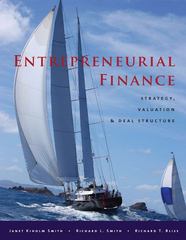2. Income statement The income statement, also known as the profit and loss (P&L) statement, provides a snapshot of the financial performance of a company during a specified period of time. It reports a firm's gross income, expenses, net income, and the income that is available for distribution to its preferred and common shareholders. The income statement is prepared using the generally accepted accounting principles (GAAP) that match the firm's revenues and expenses to the period in which they were incurred, not necessarily when cash was received or paid. Investors and analysts use the information given in the income statement and other financial statements and reports to evaluate the company's financial performance and condition. Consider the following scenario: Cold Goose Metal Works Inc.'s income statement reports data for its first year of operation. The firm's CEO would like sales to increase by 25% next year. 1. Cold Goose is able to achieve this level of increased sales, but its interest costs increase from 10% to 15% of earnings before interest and taxes (EBIT). 2. The company's operating costs (excluding depreciation and amortization) remain at 70% of net sales, and its depreciation and amortization expenses remain constant from year to year. 3. The company's tax rate remains constant at 40% of its pre-tax income or earnings before taxes (EBT). 4. In Year 2, Cold Goose expects to pay $200,000 and $1,537,650 of preferred and common stock dividends, respectively. round each dollar value to the nearest Complete the Year 2 income statement data for Cold Goose, then answer the questions that follow. Be sure whole dollar. Cold Goose Metal Works Inc. Net sales Year 2 (Forecasted) $ Cold Goose Metal Works Inc. Income Statement for Year Ending December 31 Year 1 $30,000,000 21,000,000 1,200,000 $7,800,000 780,000 7,020,000 2,808,000 1,200,000 Less: Operating costs, except depreciation and amortization Less: Depreciation and amortization expenses Operating Income (or EBIT) Less: Interest expense Pre-tax income (or EBT) Less: Taxes (40%) Earnings after taxes Less: Preferred stock dividends Earnings available to common shareholders Less: Common stock dividends Contribution to retained earnings $ $4,212,000 200,000 4,012,000 1,263,600 $2,748,400 $3,387,850 Given the results of the previous income statement calculations, complete the following statements: In Year 2, if Cold Goose has 5,000 shares of preferred stock issued and outstanding, then each preferred share should expect to receive in annual dividends. If Cold Goose has 400,000 shares of common stock Issued and outstanding, then the firm's earnings per share (EPS) is expected to change from in Year 1 to in Year 2. . Cold Goose's earnings before interest, taxes, depreciation and amortization (EBITDA) value changed from in Year 1 to in Year 2 It is to say that Cold Goose's net inflows and outflows of cash at the end of Years 1 and 2 are equal to the company's annual contribution to retained earnings, $2,748,400 and $3,387,850, respectively. This is because of the items reported in the income statement involve payments and receipts of cash. Earnings after taxes Less: Preferred stock dividends Earnings available to common shareholders Less: Common stock dividends Contribution to retained earnings 2,808,000 $4,212,000 200,000 4,012,000 1,263,600 $2,748,400 $3,387,850 Given the results of the previous income statement calculations, complete the following statements: In Year 2, if Cold Goose has 5,000 shares of preferred stock issued and outstanding, then each preferred share should expect to receive in annual dividends. If Cold Goose has 400,000 shares of common stock issued and outstanding, then the firm's earnings per share (EPS) is expected to change from in Year 1 to in Year 2. . Cold Goose's earnings before interest, taxes, depreciation and amortization (EBITDA) value changed from in Year 2. to say that Cold Goose's net inflows and outflows of cash at the end of Years 1 and 2 are equal to the company's annual contribution to retained earnings, $2,748,400 and $3,387,850, respectively. This is because of the items reported in the income statement involve payments and receipts of cash. in Year 1 to It is Grade It Now Save & Continue Continue without saving









